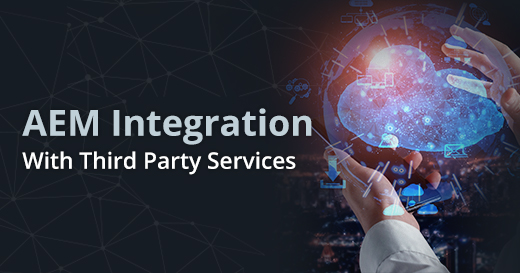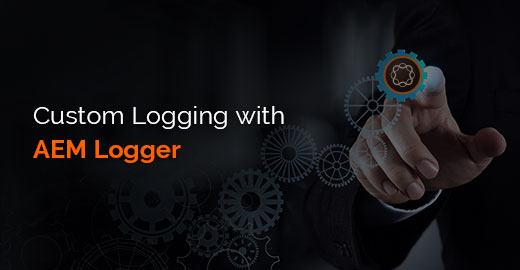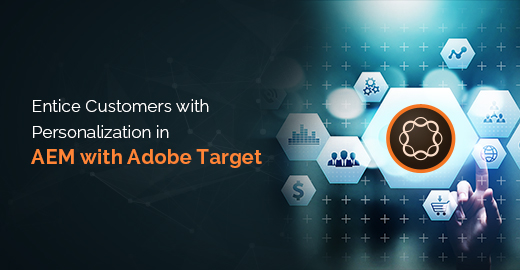AEM 6.5 Redefining your Customer Experience
Written by Vijaya Katikitala Shanthi
Business Analyst
The best customer experiences ensure long-lasting relationships. Today’s customers are ready to pay more for the personalized experience provided by their favorite brands. So, customer experience is a powerful emotion that will design the purchasing pattern.
As the world moves towards digitalization, digital transformation is no longer an option but a necessity for enterprises to stay competitive. Digital customer experience is nothing but the online expression of building trust, empathy, and human connection.

With its advanced features, Adobe Experience Manager empowers your business to create dynamic digital experiences for customers and stay established in the market.
The latest version, Adobe Experience Manager 6.5, has exciting new features and robust infrastructure which will help you build lasting customer relationships and deliver personalized experiences when and where required. It has contemporary features that support marketers and IT developers.
In this blog, we will discuss the latest capabilities of AEM and how to take advantage of them to deliver an outstanding digital experience.
AEM provides the customers a faster and seamless experience with Single Page Applications (SPA) where the authors can edit and manage the content without dependency on developers. AEM 6.5 has the capability to automatically recognize the content. It is first rendered on the server-side, then the content is read correctly and indexed by the search engine. This puts more power in the hands of authors. The most impressive feature of Adobe 6.5 is the smart crop which accommodates the content on any device, helping to refine the customer experience. Adjusting to all the channels is the crucial intent of any business, and it can be achieved with AEM 6.5.
It is imperative for any business to express to the customers how much they are valued. AEM 6.5 offers enhanced personalization features by analyzing the exact needs and customizing a solution accordingly.
Videos are gaining high importance, and so, enhancements in this area are a must. AEM 6.5 has come up with a possible solution with smart video cropping and enhanced video support that ensures videos are automatically rendered for every channel. It has improved automatic tag suggestions and the best frame selection.
We can witness significant advances in headless CMS. The HTTP API is standard now. AEM 6.5 brings full-text search capabilities and image search.
AEM 6.5 integrates with Adobe products such as Adobe Target, Adobe Campaign, Adobe Analytics, Magento as well as non-Adobe products such as Salesforce, Amazon Web Services, etc. Connected DAM is a much-awaited feature where customers have a central DAM for assets that allows seamless access for search, drag and drop, and save and publish assets which businesses can use to deliver a unified experience.
AEM 6.5 upgrade is a release on top of AEM 6.4 codebase. It is essential to keep all the features backward compatible, possible with a pattern detector, which will direct the path to reach a consistent state. With pattern detector, you identify the potential issues that may come up in the environment and plan better resources accordingly. We have a pattern detector specifically released for AEM 6.5. You can deploy it on your current environment and run it. By running the pattern detector, you will get to know the features that are conflicting with your upgrade. Backward compatibility allows you to see whether your code is breaking or overlapping when you upgrade. Most of the API features provided by AEM fits within the uber jar. The customers use this for writing their bundles by extending API jars, which are out-of-the-box jars. AEM 6.5 is crystal clear on how to use public APIs.
For an upgrade process to be successful, it needs to be planned well with the right approach. The two approaches to upgrade are In-Place Upgrade or Clean Approach.
In-Place Upgrade removes the jar file, puts the new jar file, and starts-up AEM again. Clean Approach, cleans up, migrates all the content, and installs the code.
In-Place Upgrade replaces only jar files. All pages, assets, and user groups are still there, and they need not be migrated. The repository will be in the old locations, even for AEM 6.5. On the other hand, there is no left-over in the Clean Approach; everything needs to start afresh.
Upgrade process is challenging as everything has to be deployed smoothly. The steps in the upgrade process depend on the approach chosen. However, for versions 6.0 and above, In-Place Approach is applied. Before starting an upgrade, it is essential to ensure that the application codebase is stable and all the test cases are executed as per the expected upgrade version.
There are certain steps to follow to execute a successful upgrade.
- Plan the upgrade: A well sort out plan must be prepared and followed to have a clear understanding of goals, phases, deliverables, and overall project execution.
- Development and QA: The development team is responsible for developing the required functionality and creating and customizing the code. The new system should be tested by the quality assurance team.
- Pre-upgrade maintenance: Before starting the upgrade, we should take care of a curated list of maintenance tasks.
Ensure sufficient disk space
Generate the quick start properties file
Configure workflow and audit log purging
Stop any cold standby instances
Disable custom login modules
Disable custom schedule jobs
Upgrade the database schema if needed
Execute offline revision cleanup
Remove updates from the install directory
Execute datastore garbage collection
Install configure and run the pre-upgrade task
Full backup of AEM
Backup changes to /etc
Rotate log files
- Upgrade procedure: There is a certain process to follow for a successful release. A pattern detector should run, develop, and compile the code, deploy to 6.5 environments and validated to QA, and need to do bug fixes in both Dev and QA environments.
- Post upgrade checks: Post upgrade checks should be prepared to check the activities and finalize the upgrade. For this, we need to check the backup folder, perform validation of all the checks, verify maintenance configurations, and execute the test plan.
Here is the best practice to be followed for a harmonious upgrade:
Prepare a plan and address all the requirements and ensure that everyone is on the same page
Set up an upgrade team and define their roles and responsibilities
Determine the level of effort required
Create a roadmap
The upgrade should be handled carefully with thorough planning. It needs expertise and resources to handle every aspect of the upgrade from start to end. Royal Cyber expert service can provide upgrade assessment and end-to-end re-platforming to ensure a smooth transition.
It is essential to initiate a solid digital transformation strategy. Royal Cyber helps businesses leverage Adobe AEM capabilities to enhance customer experiences across digital channels and drive more engagement.




1 Comment
Great read! Thank you for such useful insights.